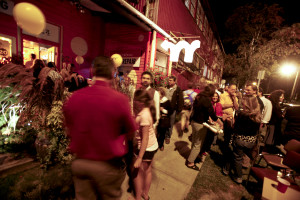When Burlington’s mayor announced that he would not support housing in the South End’s Enterprise Zone, he won cheers from artists who feared gentrification. While the mayor’s isn’t necessarily the last word in “Plan BTV South End,” the product of extensive public input (or so the city proudly insists), it does stack the odds against any kind of housing in the zone.
Too bad. One of the more intriguing prospects raised in the draft plan was to create work/live spaces – aka, affordable housing – for artists. Could that be done deftly in some of those South End warehouses without gussying up the surrounding neighborhood and driving up rents for everyone else? Maybe, maybe not, but it seems a shame not to consider this. A blanket ban on housing seems to foreclose the possibility.
Well, it’s a possibility that’s being embraced elsewhere, all around the country – in little towns and big cities, both. “Colorado’s affordable artist housing efforts catching on quickly,” read a headline in Saturday’s Denver Post. Artspace, out of Minneapolis, has been developing work/live artists’ lofts for more than 20 years – but apparently none yet in New England.
If Burlington’s artists aren’t interested, perhaps their counterparts in other warehouse-rich Vermont towns might be. Bellows Falls, Springfield, Rutland, Brattleboro, among many others? Here’s the view in Colorado, according to the Post article:
“The hope is that some rural projects will have the added advantage of preserving historic structures in need of attention. That makes Trinidad, with its excess of significant, and underused, buildings, a good candidate for the pilot program…”
Check out what’s been done in Fergus Falls, Minn. (pop. 13,300)…
or Hastings, Minn. (22,400).
If you’re looking for an example of a dreary warehouse transformed, look at Council Bluffs, Iowa …
or even Memphis – which is fashioning an arts district around its project.
Now, it may be that some of projects, the affordable housing notwithstanding, have contributed to surrounding gentrification. But if so, did it have to be that way? Municipal planners take note.




